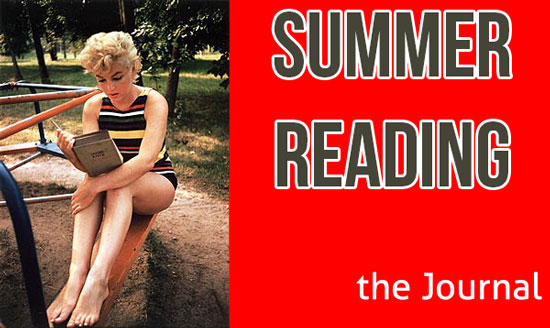
As much as I love to read, reading as a writer is a fraught experience. I rarely read purely for pleasure anymore, but instead am always analyzing what I’m reading, trying to sort out what works and how, what doesn’t and why, and which techniques I should be attempting in my own writing.
Recently, a young writer was talking about how reading often leads to a crisis of confidence for her, and I reassured her (at least, I hope this is reassuring…) that this feeling never goes away. If anything, it just gets worse over time for me, because the more I learn the more I know just how much better than me some other writers are.
Oh how I miss the confidence of dumb teen me!
All I can do is work through this insecurity, because I can’t turn it off. Writing ends up being something akin to faith, if only in myself (The only kind I have. See you in hell?) and my own ability to make whatever I’m working on good in the end. Reading good books is the ultimate test of that faith.
So here are two books I’ve read recently that made me feel extremely insecure—the highest compliment I can offer.
Beautiful Ruins by Jess Walters
Jess Walters does an amazing job capturing not just his female characters, but particularly how his female characters perceive the men in their lives. Among the large cast of characters there are two selfish, destructive man-children—Shane Wheeler and Pat Bender—that are at various times perfectly skewered by women in their lives. But Walters doesn’t treat any of his characters with disdain, even when he’s portraying them at their most ridiculous. Every character gets their due, and although the end is perhaps sentimental, no one gets more redemption than they’ve earned.
Beautiful Ruins reminded me a bit of A Visit from the Goon Squad by Jennifer Egan. Although Beautiful Ruins isn’t billed as a novel in stories, it functions in much the same way, with each chapter moving between different reoccurring characters and times. Overall, Beautiful Ruins moves more linearly within its separate time lines, and in the end things are brought together tidily, but many of the chapters work as independent stories. Chapter 4, “The Smile of Heaven,” for instance, reads like a complete short story, and a fantastic one at that.
What I find most intimidating about this novel is its scope: it spans decades, continents, and the perspective of several characters. It contains fragments of a play, a novel, and a character’s autobiography. Yet although the novel is expansive, it is also intimate. Beautiful Ruins is often described as a funny book, and it is, but it isn’t frivolous, and even the more overblown characters like Michael Deane don’t read as caricatures.
Beautiful Ruins is being made into a film (Of course it is! How could a book that deals partially with the scandal that occurred on the set of Cleopatra not be optioned?) and I’m very curious to see how on earth they’ll be able to adapt this sprawling story for the screen.
Dare Me by Megan Abbott
Dare Me is narrated by sixteen year old Addie Hanlon, varsity cheerleader and “lieutenant” to her best friend Beth Cassidy’s squad captain. Although they’re best friends, their relationship is uneasy, and the fissures between them become cracks under the regime of a new, strict cheer coach.
A book that examines the intense, fraught relationships between teen girls? Yes, please! There is nothing I love reading about more. And Abbott’s characters, both teenage and otherwise, are rich, complex, and wholly believable—perhaps the most important criteria for me.
But in Dare Me, the element I found most intimidating was also the one thing I really disliked about the book: the voicey, writerly language. I typically prefer language that doesn’t call undue attention to itself (I would rather pay attention to character and story than how pretty a sentence is.) even in third person, where any florid writing can more easily be attributed to the author than their point-of-view character, but Dare Me is written in first person so Abbott’s language feels particularly egregious. A quick perusal of some Goodreads reviews shows that I’m not the only one who was frustrated by the language, which was not only unbelievable coming from a teenage girl, but also imprecise at times.
But dammit, sometimes the language is just so cool. When Addie describes a light “coning halogen”, part of me is like ‘yeah right, what teenage girl talks like that’, but another part is frustrated because I know I couldn’t write like that even if I tried. It also feels somehow small-minded to judge Dare Me based on the yardstick of realism when it’s neo-noir. The super stylized and completely unrealistic dialogue of a movie like Brick, which is also high school noir, doesn’t bother me at all, so why should it bother me here? Because I’m fickle and unfair I suppose.
Dare Me is also being made into a movie and I think it could make a great one, especially if the rumor that Natalie Portman will play the cheer coach is true.
If you’re reading this hoping to gain some insight into my editorial tastes, here’s the TL; DR version: send me some sprawling mean girl noir minus any noir style, set on a movie set.
Just kidding!
Kind of.
